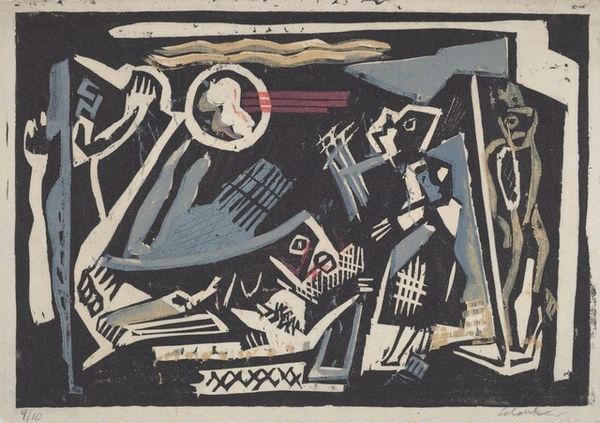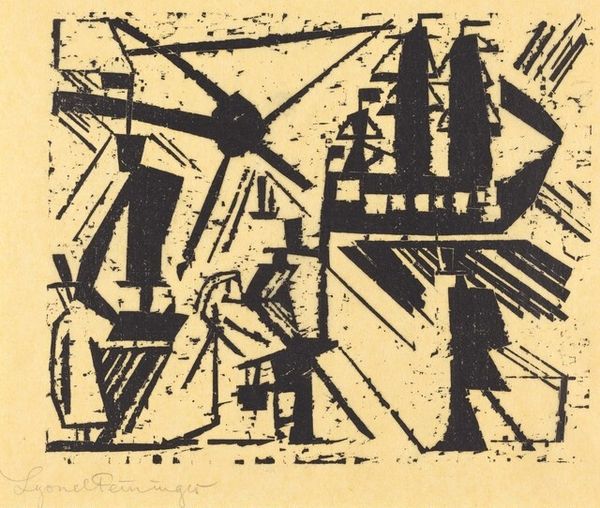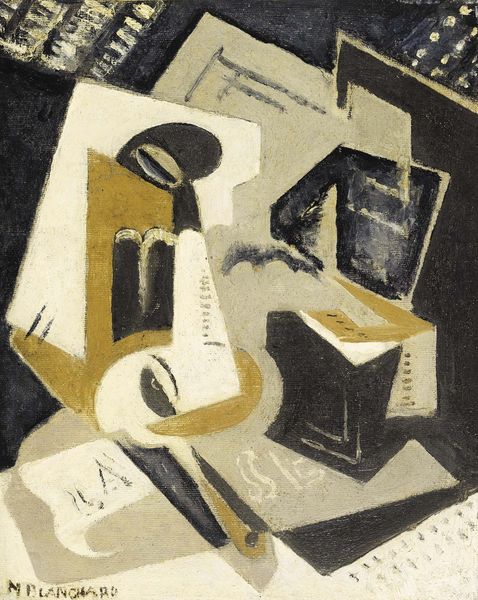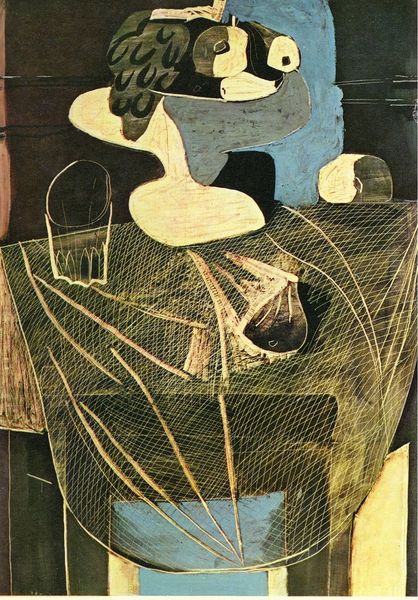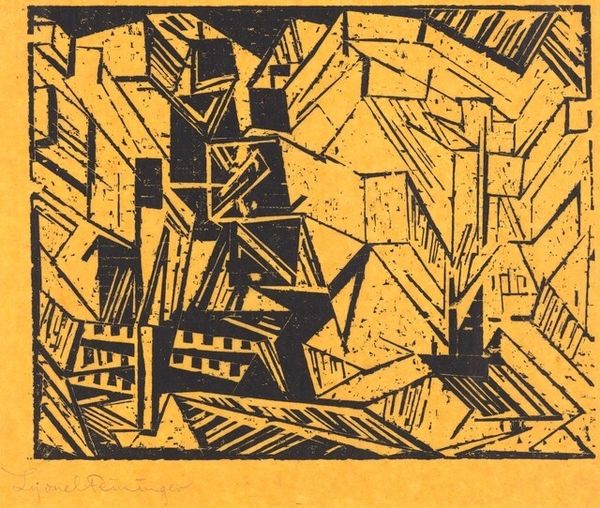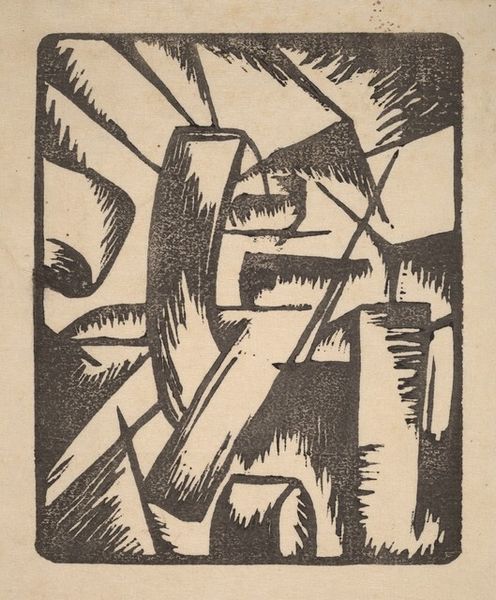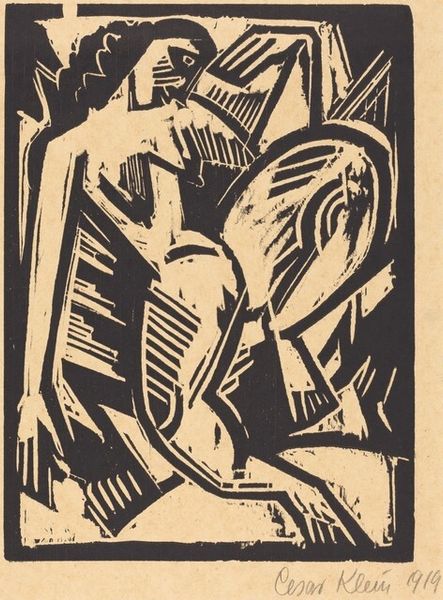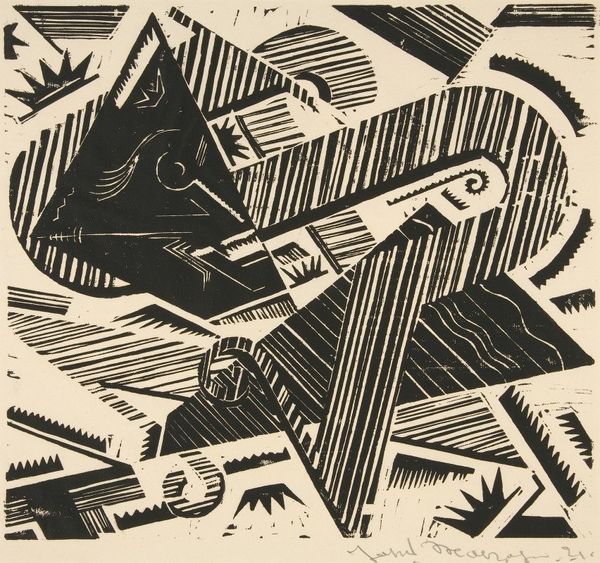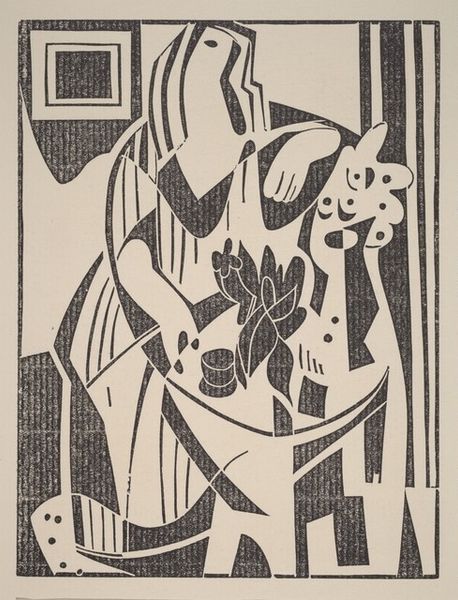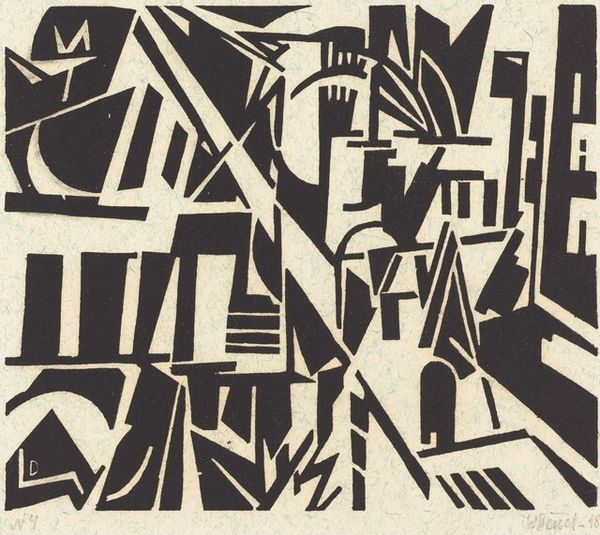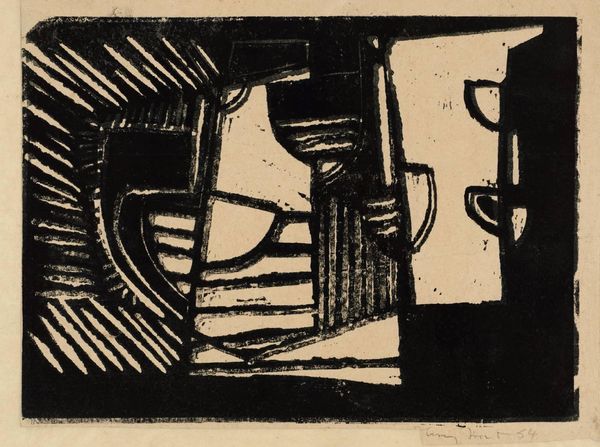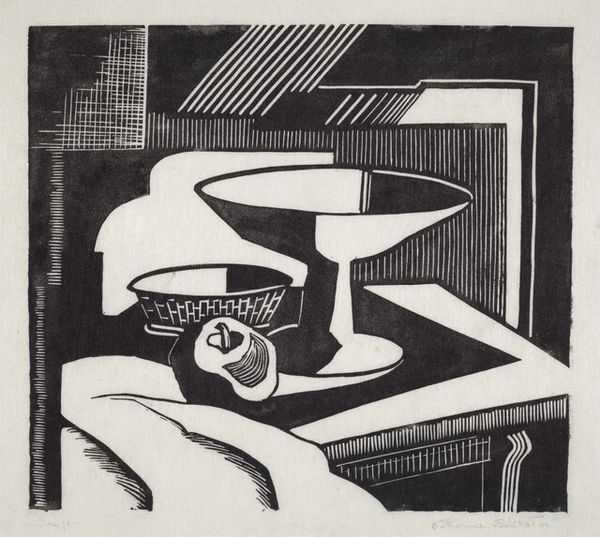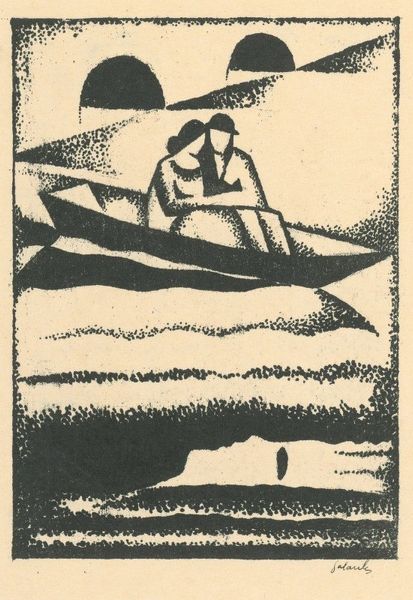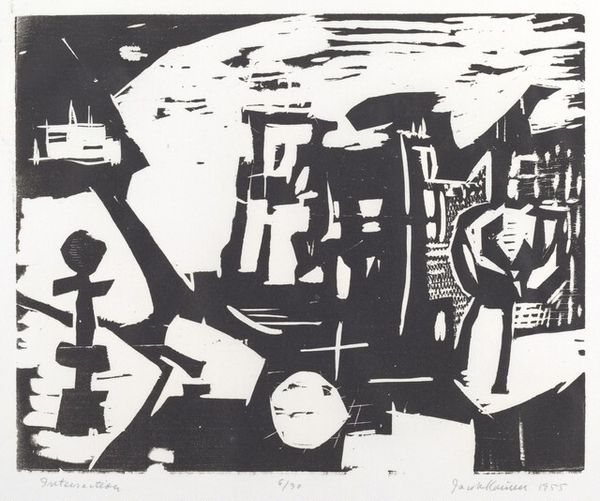
print, linocut
#
cubism
# print
#
linocut
#
pop art
#
linocut print
#
geometric
#
abstraction
#
line
Dimensions: 33.4 x 41.2 cm
Copyright: Public domain US
Curator: Welcome. Here we have Pablo Picasso’s "Glass, bottle, packet of tobacco," a linocut print created in 1922. What are your first thoughts on this work? Editor: Visually, it’s very jarring. The planes are all disrupted. The lines don't resolve, creating a disorienting composition. There is this tension of recognizing everyday objects—a glass, a bottle—but struggling to piece them together. Curator: It's certainly a piece that engages with perception. Picasso was deeply invested in Cubism at this point, breaking down forms and representing them from multiple viewpoints simultaneously. Consider how the objects almost emerge and recede at the same time. Editor: And within that disassembling of forms, do you think we can see the influences of the era? The rapid industrialization after the war, perhaps. Disorientation could be seen as a cultural reflection. Curator: Definitely. Also, there’s a playful, almost graphic quality to the lines themselves. The simple visual language really connects with the cultural history and symbolic impact. Editor: Absolutely. And thinking about tobacco—a commodity that often symbolizes trade, colonization, and even addiction. Bringing that in, it invites commentary, consciously or not, on the colonial realities of the time. Curator: Precisely, so how does that intersect with Picasso’s larger body of work and his engagement with different forms of representation and meaning? Editor: He’s wrestling with modernity itself. How do you depict the modern world? Can art even truly represent reality, or is it always mediated, fragmented? Perhaps we’re meant to grasp only fragments. Curator: Indeed. It speaks to the impossibility of truly capturing lived experience within one frame. The cultural value then shifts to the ways the forms collide. Editor: Right. Well, this piece definitely provides plenty to consider. Thanks for offering those observations; I appreciate the fresh look. Curator: Thank you. Reflecting on this print, it reminds me of how the enduring nature of symbols is both cultural and deeply personal.
Comments
No comments
Be the first to comment and join the conversation on the ultimate creative platform.
